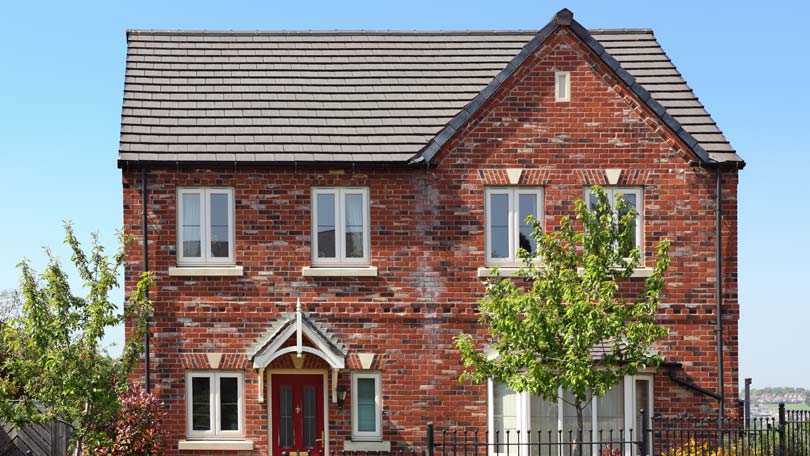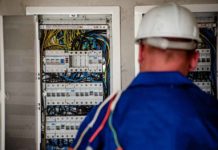
While the thought of buying a newly built home is appealing it’s a simple fact that the majority of homes sold within the US and Canada are ‘existing’, or ‘older‘ homes. In fact, statistics show that around 95% of homes sold in the United States each year are existing home sales so unless you’re buying within that small 5% minority, you’re going to be buying an older home.
Now for many of us, buying an existing home can be a very smooth and rewarding experience, especially if that home has been looked after and everything inside and outside has been well maintained. Homes are built to last after all, but without regular maintenance it’s amazing how quickly things can start to go wrong… but more on that in a moment.
Lot Size
Many of the new subdivisions and communities being built these days seem to want to squeeze as many homes as they can into one small space, and while the home itself may be a good size this usually means the lot is tiny or even non-existent. However, this isn’t generally the case with older homes in established neighborhoods, where lots are generously proportioned and you don’t feel like you’re sharing your outdoor space with your neighbors!
Established Neighborhood
Older homes are usually within established neighborhoods, so you have the schools and grocery stores nearby; easy access to public transit and recreational facilities, and all the services you would expect to have are provided, such as mail delivery, garbage collection and more.
But, Older Homes Have Their Drawbacks
This all sounds great, but of course, older homes have their drawbacks too. As mentioned earlier, if they have been well maintained you’re less likely to have problems down the line, though of course nobody can guarantee this. There are far more points that you will need to consider with an older home than you would when buying a new home, and for this reason it’s even more important to have a home inspection performed before buying. Some of the problems could include the following:
The Structure
Is the home structurally sound? You should get a good idea of this just by looking around yourself – if there are large cracks in any of the corners this could mean the building has subsided a little. The foundation could also have cracks or holes in it, but it’s much more difficult to know this unless there are parts of the basement that are unfinished.
Damp
Following on from the last point, if there is damage to the foundation you could have a damp problem if water has been penetrating the walls unobserved for many years. This can lead to mould and health issues, not to mention the damage it can do to the structure.
Damp can also be a problem from above too – if eavestroughs or downspouts are broken, rainwater can be running back into the house rather than being channeled away from the house.
Windows and Doors
If the windows and doors have been replaced recently then great, but if not, older homes are renowned for having drafty windows and doors that let in the cold and ensure you pay more to heat the place. Consider how much it would cost to replace all the windows and doors if you decide to buy the home, or whether you’d be happy to live with a home that costs a fortune to keep warm.
The Roof
Roofs don’t last forever unfortunately, so again, unless your roof shingles were replaced within the last few years you’ll need to inspect them and see how much life they have left. And another thing to consider is if the roof has been leaking for a while, is the roof structure ok? The plywood underneath the shingles could be rotting and need replacing too.
Electrical and Plumbing
In older homes the electrical and plumbing is not always up to the standards required for safety today. If you have an older fuse box is it overloaded, or is there space for adding extras on? What is the rating?
Plumbing is a little different because older plumbing could be fine. Usually it’s when a previous homeowner has started to add and change things that problems start. Ideally you would want to buy an older home where both the electrical and plumbing have been updated.
Hot water tanks can be included under plumbing, as a tank is something that will need to be replaced more frequently than other elements of the home. Tanks aren’t built to last for decades, (although some do last that long!), and while replacing a hot water tank isn’t horribly expensive, the damage a leaking tank can do could cost a lot of money.
Furnace
One element of the home that is expensive to replace is the furnace. Furnace’s are designed to last for longer, but if the home you’re buying is still using a furnace that’s more than three decades old you should consider the fact that it could break down and have to be replaced. Regular servicing of the furnace in the past will help to extend its life.
Asbestos
Asbestos is a scary word and unfortunately if you’re looking at buying an older house there is the chance that some elements of it will contain asbestos. While this isn’t actually a problem for day to day living, you have to be extremely careful if you plan on doing any renovations. You can find out what homes are more likely to have asbestos and more general information here. In the US the manufacture of asbestos products was banned in 1978, and in Canada in 1979, BUT some builders were still using asbestos based products that were manufactured before the ban as late as even the 1990s, so you must get this checked.





